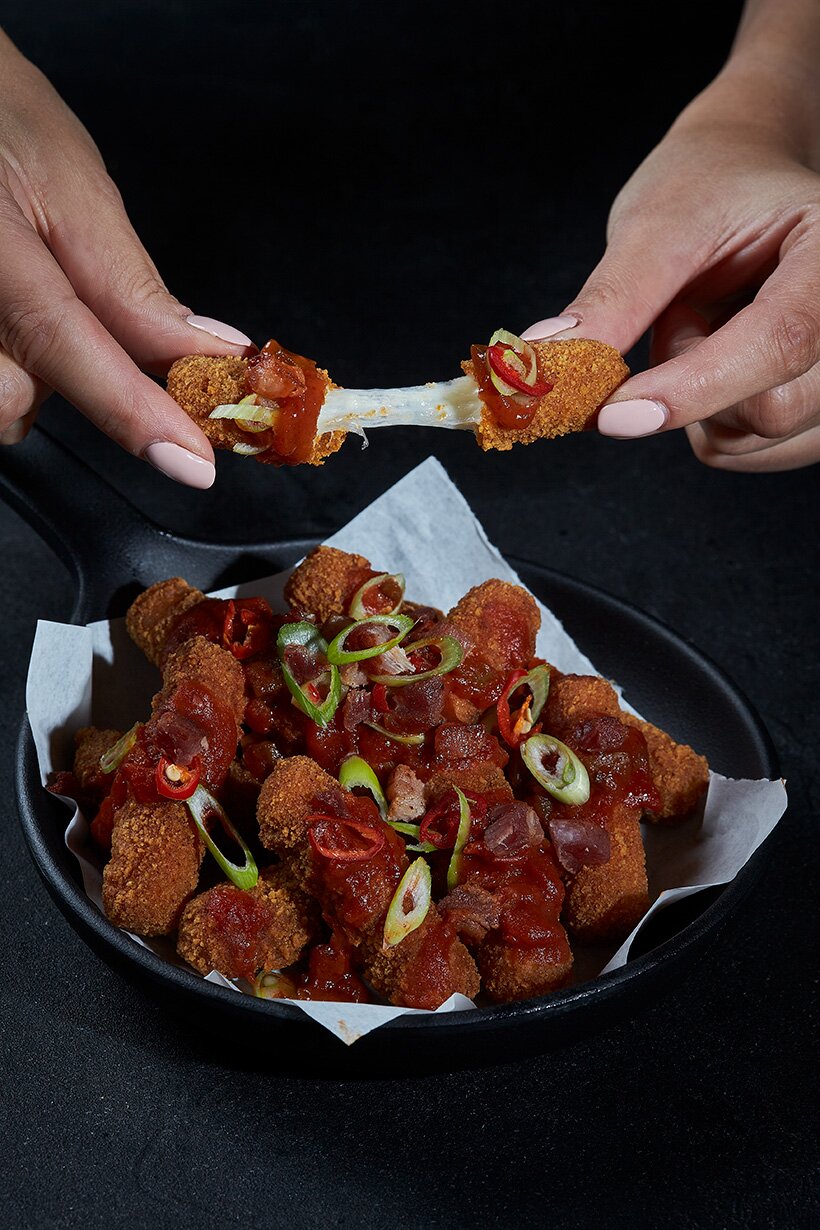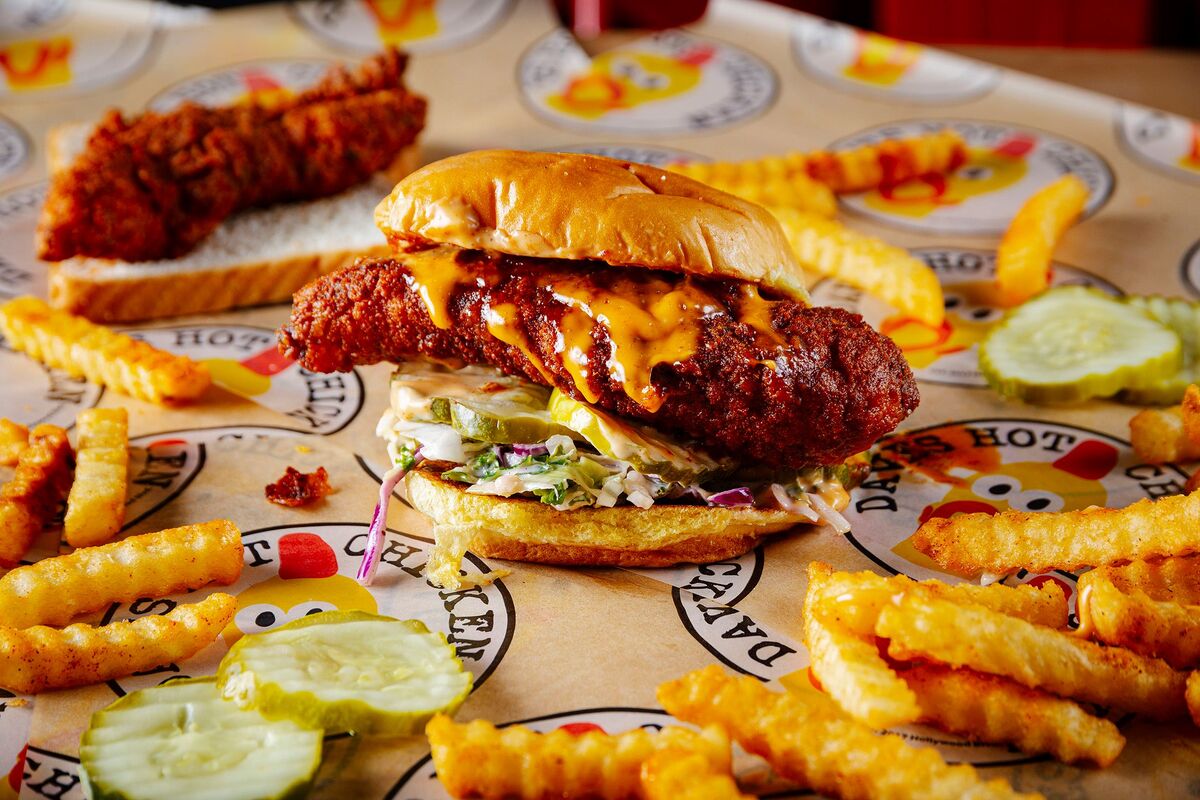Whip up a frenzy with flavourful soft serve ice cream
This year has seen a flavour explosion in the world of soft-serve ice cream. Find out how operators can whip up a frenzy with the latest sweet treats and savoury favourites
A steady ooze of ice-cream, off-white and layered in peaked folds, swirls from a Carpigiani machine onto a waffle cone. Anyone who’s ever waited expectantly for a Mr Whippy will know what this looks like, but this soft-serve – produced by Soft & Swirly, a London ice-cream maker – is a bit different from the vanilla enjoyed in Britain’s parks and seaside towns: the flavour is lemongrass and coconut, served with a generous dollop of passion fruit curd.
It takes something to be the most alluring food option at Borough Market, but that’s what Soft & Swirly achieved during a summer residency at the soon-to-be home of Sri Lankan restaurant Rambutan on Stoney Street. For eight weeks, business and life partners Farah Kezouh and Sam Lowry produced a dizzying variety of flavours inspired by Sri Lanka: mango, cashew and jaggery, watermelon and hibiscus, sour cherry, plus many others, culminating in lemongrass and coconut at the end of August.
The reaction from customers was invariably joyous, according to Lowry. “It’s really enjoyable serving someone an ice-cream – a child or an adult – and watching their faces,” he says. “Especially when it’s a crazy flavour, when it’s yellow, when it’s bright pink – they’re so used to Mr Whippy. This is fun, it’s a very simple [source of] joy.”
At a time when Britons’ lives are as difficult as they have been for decades, there’s a lot to be said for simple joy. Perhaps that’s why soft-serve ice-cream is enjoying a wave of popularity, served in restaurants and street-food venues across London, from Boxpark Shoreditch’s Soft Serve Society to Le Choux in Ladbroke Grove. People are looking for affordable pleasures: 73% of respondents to Hodge’s recent cost of living white paper say they’re planning to give up meals out to pay increased bills.
“When we started three years ago, there were a few people doing it, but this year people keep saying to me – ‘have you heard of this person, or this person is making soft-serve’,” says Lowry. “It’s really good. Some people go for simple flavours, others fruit. There’s plenty of room to grow in soft-serve, because in terms of high-quality options, we’re a long way behind other places like Germany, for example.”
Soft launch
Kezouh and Lowry come from the world of hospitality; she’s a sommelier, he a trained chef. His last job was at café and grocery store Leila’s Shop in Shoreditch, where an introduction from the Northiam Dairy to try their soft-serve opened the door to his current obsession.
Covid gave him the time to sit down and work out how to use the soft-serve machine: “There’s no recipe book,” he says. “There’s a million ice-cream recipes, but nothing for soft-serve.”
The difference, he says, is to do with fat: you need less for soft serve, and consequently less sugar too. Classic ice-cream might be anything between 14%-20% fat; Soft & Swirly’s is between 7%-8.5%. In terms of flavour, anything you can do with normal ice-cream is possible – the only issue is if the mixture is too viscous it won’t feed through the machine.

“That’s the main limitation, viscosity,” says Lowry. “Mango for example – it’s so fibrous. If you make a normal mango ice-cream, it’s just too thick. You have to work out how to thin it out without losing the flavour.”
Their summer residence at Rambutan came about because it was empty: Cynthia Shanmugalingam, the restaurant’s creator, is planning to move in early in the New Year, and she offered them use of the space. It was a lucky break, giving them a chance to try out their model on some of the UK’s most discerning eaters, with ice-creams priced at £4.50 a go. It was a success, Lowry says, but not immediately.
“We were struggling to find somewhere, so that was amazing,” says Lowry. “The summer was so warm and in the first week we had a lot of tourists. It took a while to gain actual Londoners and we needed those return customers as it was a hard sell – we only do one flavour and there’s a gelato place around the corner that does 20. Tourists can be fickle, they walk off, but once we gained a reputation, and people understood we’d always be changing the flavour, it took off. After a month, we were very, very busy.”
The fact that you can only serve one flavour at a time is another limitation. “You can buy machines that have two cylinders, and then do a twirl of the flavours together,” says Lowry, “but they’re very expensive. We went with a Carpigiani machine because they’re the best: they can produce [ice-cream] the fastest, they make the best texture, all those sorts of things.”
Soft-serve is not the only indulgent dairy treat thriving at the moment. According to statistics from Kantar, the UK dairy drinks category is now worth £306.5m, with milkshakes and flavoured milk responsible for much of that. Milkshakes represent 2% of the overall market, driven by the popularity of fast-food options. Flavoured milk, popular with on-the-go customers, boomed during Covid; coffee drinks saw value increase by a third.
For those wanting to get into milkshakes, there are plenty of options. Part of the Rich’s Products family, f’real offers blenders “that deliver premium ice-cream milkshakes, plus smoothies and frappes in store in a range of flavours,” says Gemma Briant, marketing manager. “These blenders, which feature automatic sanitisation and minimal cleaning, are loaned at no charge to outlets – both self-serve blenders for convenience stores and behind the counter blenders for the catering channel.”
The current UK flavour portfolio includes chocolate, vanilla, strawberry, cookies and cream, salted caramel, frappe, strawberry and banana smoothie, mango and passion fruit smoothie, with three new flavours – banana, birthday cake and chocolate fudge brownie –introduced this year, she adds. Yazoo is the UK’s most popular traditional flavoured milk brand. “The wider category’s success over the last year shows that people are happy to pay more for indulgence that doesn’t break the bank,” says Wayne Thompson of FrieslandCampina, the Dutch group that owns Yazoo. “As we’ve progressed through 2022, shoppers have looked for smaller indulgences and rewards such as a sweet treat or a drink instead of holidays and expensive treats.”
Something to savour
It’s not just sweet treats that are growing. Hot cheese snacks like halloumi fries – recently introduced on McDonald’s menus, and to be found in most supermarkets’ frozen sections – are increasingly popular. McCain offers P!ckers, a range of cheese appetisers and sides, including the recently introduced halloumi fries and mini BBQ mozzarella sticks alongside breaded mozzarella sticks and chilli cheese nuggets.
Even if customers economise, they’re still keen to feel they’re getting value for money, according to McCain’s director of category management Jo Holborn. “We know that operators understand that the next few months are all about ‘value for experience’,” she says. “If consumers are eating out less frequently, they certainly want each occasion to be brilliant and memorable. We believe that our P!ckers range includes the popular varieties that will really sell through together with the quality to support the versatility required on menus.”

As well as value, environmental impact and health continue to be important considerations. For the latter, Kerrymaid has a range of dairy-based ingredients: Kerrymaid Buttery, which has 77% less saturated fat than butter and can be spread straight out of the fridge, and cream alternatives in single, double and whipping varieties, which, Kerrymaid claims, deliver the taste of fresh dairy and are free from hydrogenated vegetable oils and trans fats.
“While dairy is still used in many dishes as a great vehicle for flavour and for adding texture, along with its role in high-protein dishes and meat-free and gluten-free menu alternatives, caterers should look to products with a lower fat content that allow customers to indulge without guilt,” says Karen Heavey, brand manager.
The team at Bord Bia – the Irish Food Board, meanwhile, are focused on sustainability and low food miles, as well as flavour. “I’m incredibly proud that renowned chefs and suppliers can rely on high-quality Irish dairy to serve their customers as a trusted and reliable partner of the UK food and drink industry,” says Estelle Alley, UK category manager. “An example of this comes from Aubrey Allen’s wholesale artisan cheese arm, Fromage to Age, where it is essential to them to source the very best to supply top hotels, restaurants and delicatessens.”
From cheese to soft-serve, a desire to give customers the best experience – despite current difficulties – continues to drive dairy forward. Back in London, meanwhile, Soft & Swirly is preparing to move into a production kitchen in Spa Terminus in Bermondsey. “That’ll be where I make the mixes, meaning that in terms of a retail space we’ll just need somewhere to serve,” says Lowry. “In an ideal world we can have two or three sites across London, with all the mixes coming from one production kitchen.” It looks like the rise of soft-serve has a way to go yet.
Suppliers
Aubrey Allen www.aubreyallen.co.uk
Bord Bia www.bordbia.ie
Carpigiani www.carpigiani.co.uk
Kerrymaid www.kerrymaid.com
McCain www.mccain.co.uk
Soft & Swirly www.instagram.com/soft_n_swirly
Rich’s Products www.richs.com
Yazoo www.yazoo.co.uk















